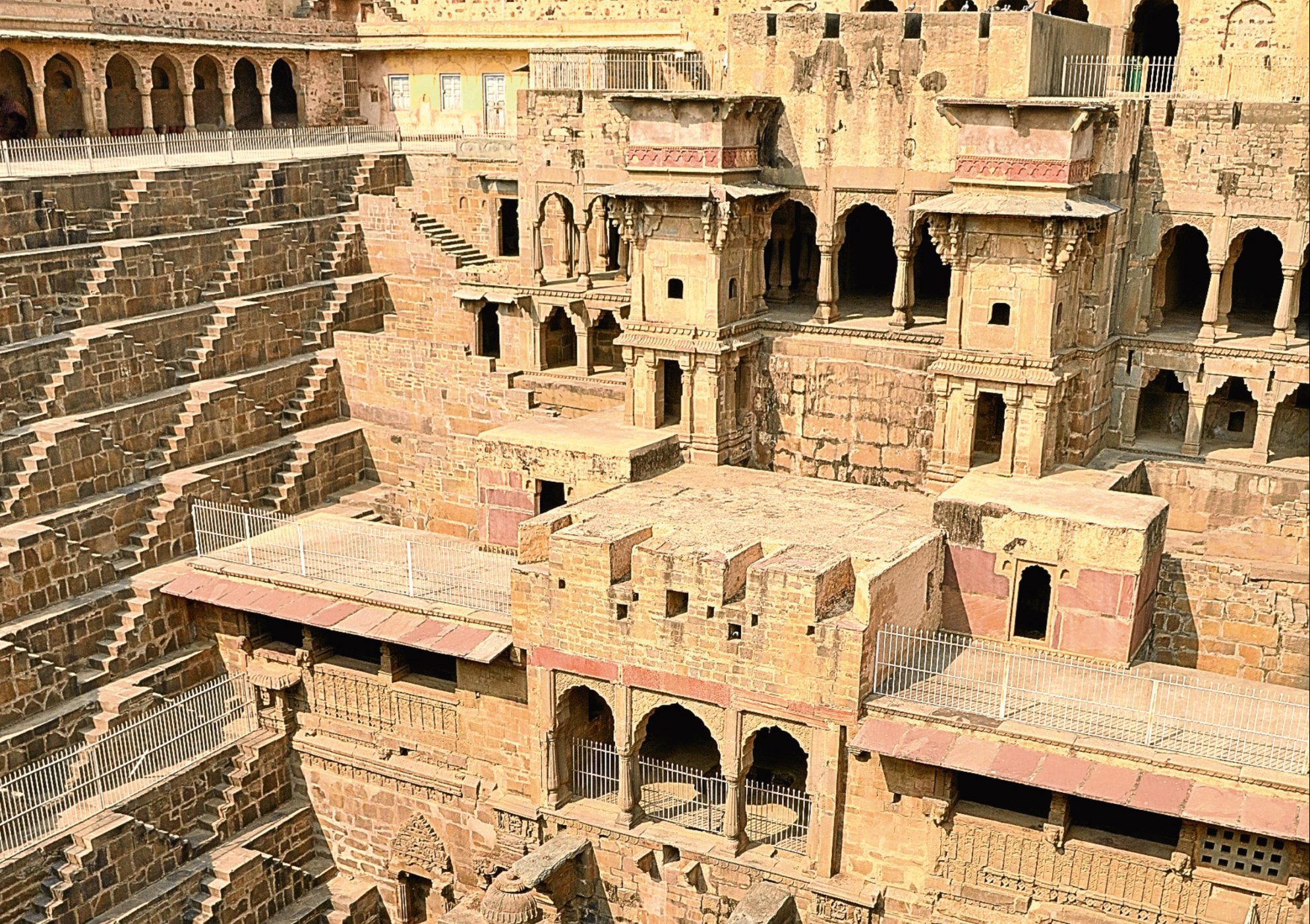
IT can be hard at any age, living in a house where you have to climb a lot of stairs every day.
As you get older and the muscles are less willing, you really don’t look forward to the daily climb!
Recent studies have showed that high-rise living, or even just having to negotiate one flight of stairs to a first-floor flat, takes its toll on the older generation.
In fact, experts reckon that if you live above the 16th floor, medics take so much longer to get to you that if you are seriously ill, you’re in much more danger.
By the 25th floor, studies showed, you have almost no chance of surviving.
So just imagine how it would feel, if you lived at the incredible Chand Baori.
Built in the ninth century at Abhaneri, Rajasthan, India, it’s home to one of the country’s largest and most elaborate stairwells and leaves plenty people out of puff just by looking at it.
Baori is the local name for stairwell or stepwell, and these were originally tiered stone structures built this way to help collect and store rainwater in very dry, arid countries.
Many of India’s baori are accented with fancy arches, tall columns, sculptures and fascinating, varied patterns — so at least you have something to admire through the beads of sweat while you struggle from the bottom to the top!
The four-sided Chand Baori is 13 storeys high and 100 feet deep, with a total of 3,500 steps in its distinctive zigzag style.
One side of the inside is a temple to Hindu goddess Harsiddhi, and a small pool of water at the very bottom serves as a reminder of its original intended use.
Today, we oldies will be envious to know, it is often full of much younger, fitter tourists, with calf muscles that don’t burn so much after hard work, and they see how quickly they can climb from the bottom to the top.
Hopefully, once they get to that peak, they don’t do what a famous Indian queen once did.
The incident occurred at Adalaj Vav, one of India’s most-famous stepwells.
It features beautiful carvings that tell the story of this queen, who was left a widow after the local area, Dandai Desh, was brutally attacked and its ruler, her husband, killed.
The king who had invaded and conquered them fell completely in love with her, but she told him he had to complete the stepwell, which her dead husband had started, before she’d consider marrying him.
He spent much money and time having the deep stepwell constructed, ornate and perfect with carvings of leaves, fish, flowers and animals.
When it was finally completed, the widow queen insisted she go straight to the top to inspect it before they got down to arranging their wedding.
She promptly threw herself to certain death at the bottom — her husband’s stepwell complete, and herself finally free from the invading King.
READ MORE
Door of Hell’s a tourist Heaven for visitors to Turkmenistan
Boulder choices: The places thrillseeking holidaymakers are flocking to

Enjoy the convenience of having The Sunday Post delivered as a digital ePaper straight to your smartphone, tablet or computer.
Subscribe for only £5.49 a month and enjoy all the benefits of the printed paper as a digital replica.
Subscribe